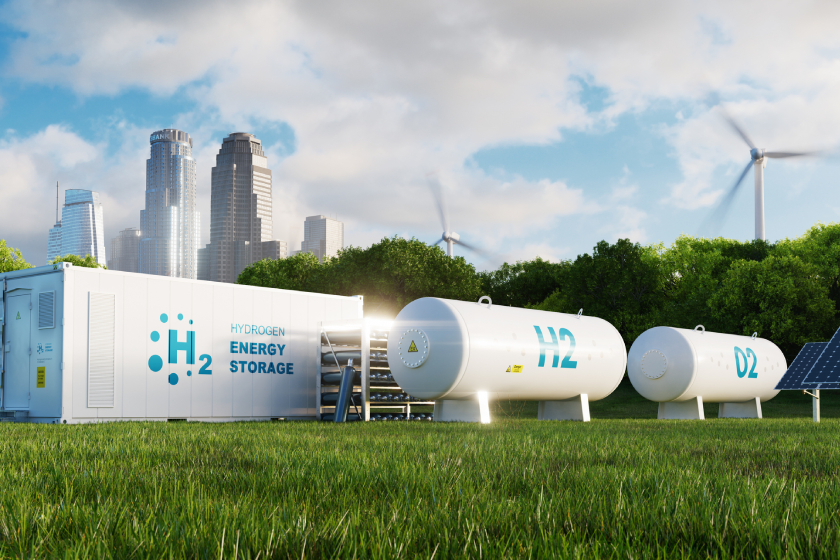ATO governance needs reform: IPA-Deakin SME Research Centre
The IPA-Deakin SME Research Centre has examined the shortcomings of the ATO’s governance model and proposed a Tax...
READ MORE
The Albanese Government has allocated $2 billion to accelerate the development of Australia’s hydrogen industry as part of a budget measure called Hydrogen Headstart. However, it's arguably just a catch-up.

The Federal Budget contained several measures to support Australia’s clean energy transition to support Australia’s commitment to reducing greenhouse gas emissions to 43% below 2005 levels by 2030, and pledged to reach net zero by 2050.
Immediate action is necessary if these goals are to be reached.
When Jim Chalmers delivered his budget speech, it became abundantly clear that the Albanese Government is putting its eggs in the hydrogen basket, with $2 billion allocated to accelerate the development of Australia’s hydrogen industry. This contributes to a total investment of $40 billion into making the nation a renewable superpower.
Let’s pause the sales pitch for the hydrogen dream and rewind to the week before the budget was released, when the Federal Government-owned Snowy Hydro 2.0 announced that it was pushing the project delivery date back at least two years, and flagging that there would be cost blow outs.
Snowy Hydro 2.0 was marketed as a nation-building project, but despite being funded to the hilt, it has been plagued by repeated delays and rising costs. How can a major project like this lack accountability for on-time and on-budget delivery?
We’re now not sure when Snowy Hydro 2.0 will increase the generation capacity of the national grid, with Minister for Climate Change and Energy Chris Bowen hoping for some “early progress” before the revised late-2028 to December 2029 delivery target.
However, we do know that this delay has left Australia behind where it needs to be, and it raises concern about how the national grid will meet the eastern states’ energy needs as coal-fired plants reach their scheduled closure dates.
So, back to the hydrogen discussion. The ‘Hydrogen Headstart’ is a catchy headline, but is Australia really leading the way, or even capable of leading the way, for renewable energy generation, or is it just trying to catch up?
Before launching deeper into Australia’s hydrogen credentials, it is important to provide some context around hydrogen energy, and whether its production is renewable.
There are three main ways to generate hydrogen energy:
One of the greatest payoffs of hydrogen is that it enables the storage and distribution of excess energy produced from renewable sources like solar and wind. However, the World Bank estimates that up to 95% of global hydrogen production is grey, or fossil fuel-based.
As such, green hydrogen is ultimately where the greatest economic opportunities exist, not to mention the only option that is truly renewable and clean.
To make the most of the budget’s funding injection into helping the renewable hydrogen sector find its feet, the government must focus on scaling the production of green hydrogen.
And while it is relatively simple to allocate budget in ways that align with priorities, accountability for delivering outcomes must also be assigned and those outcomes tracked.
The Federal Budget doesn’t provide a breakdown of the Hydrogen Headstart investment, or what proportion will go towards green hydrogen.
Although, when the Department of Climate Change, the Environment and Water released its annual State of Hydrogen report in April, Bowen told media the report “reinforces that Australia has the foundations to become a global leader in green hydrogen”.
Bowen proudly highlighted the fact that Australia “has around 40% of all announced global hydrogen projects”, with “more than 100 green hydrogen projects” announced in 2022 alone.
The use of ‘announced’ projects as a measure of success, rather than ‘delivered’ or ‘on schedule’ projects, does little to allay concerns about the lack of accountability for outcomes.
The pipeline is, nevertheless, encouraging. But the report itself also warns that Australia has been falling behind as a policy leader, citing the “market-based policy mechanisms, and new economic incentives” in countries including the United States, Canada and Germany.
An independent assessment conducted by Deloitte seems to hit the nail on the head, revealing that while Australia “has a large pipeline of announced hydrogen projects”, it trails many OECD nations when it comes to deployment.
Land size, geology, and Australia’s abundance of fossil fuels have been identified as comparative advantages to seize the hydrogen opportunity, though the latter – fossil fuels – should not have any impact on Australia’s presence in the green hydrogen market.
Driving the cost of production down will also be necessary to compete in global markets, as the US has flexed its fiscal muscles and introduced a tax rebate that is set to provide the country with a significant green hydrogen cost advantage.
Observing this situation back in February, Deloitte Access Economics Lead Partner Dr. Pradeep Philip warned that “the US Inflation Reduction Act looks set to cut Australia’s renewable hydrogen lunch”.
This budgetary investment is not a headstart for Australia. This is an urgent response to secure our clean energy future and maintain export opportunities.